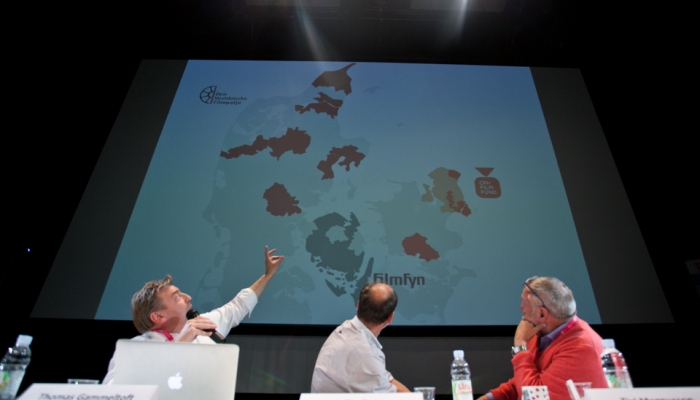Danes Go South – Film Funds: Centres and Decentralisation



What are the limitations of national film funds, what kind of films they should subsidise, what is the Danish model ad what is the use of cinema decentralisation – those were some of the topics discussed at the Danes Go South/Film Funds: Centres and Decentralisation panel held on Thursday, at the Zagreb Dance Centre as part of the 12th Zagreb Film Festival.
The Danish model of structuring cinema currently has an umbrella national institution, the Danish Film Institute, and three regional funds. One of them is the Copenhagen Film Fund, founded in September 2013, whose operations were presented by Thomas Gammeltoft. The Copenhagen Film Fund aims to attract foreign productions to film at the Danish capital and throughout two years they can benefit from 4.5 million Euro. The investment means come from the city and local municipalities, private investors and producer associations. Basically, this is an investment fund trying to create jobs and growth in the region, explained Gammeltoft, and the investment amount depends on how much a production would spend. Gammeltoft explained that currently in Denmark they were lobbying for foreign production incentive measures because, among other benefits – like branding and tourism promotion – such as system maintains a strong audiovisual industry.
Head of the Slovenian Film centre Jožko Rutar explained that the Slovenian fund annually disposes with around four million Euro and that their funding is governed by artistic and not commercial value of a project, at the same time trying to please the taste and demand of taxpayers. He added that Slovenia, due to a limited area of reach of their films, focused on collaboration with neighbouring funds and got involved in the establishment of the RE-ACT transregional initiative (Regional Audiovisual Cooperation and Training) with the Croatian Audiovisual Centre and Friuli Venezia Giulia film centre. The idea is to delineate an area that would attract new audiences, new filmmaker collaborations and new co-production projects.
Danish producer Tivi Magnusson pointed out that successful films require a universal story that travels beyond the boundaries of ‘local’ country because then they are much easier to finance. Asked if one should make only commercial films that would generate box office profit, he said that this does not mean the film could not be artistic – ‘but must be able to travel’. In order to get good stories, we need to spend more on good writers and famous actors within Europe – and then the films will travel, too, said Magnusson.
Head of HAVC, Hrvoje Hribar, said that criticism against the work of national funds fail to take into account the fact that funds need to choose among submissions and cannot create on their own, but can only support the strengthening of the audiovisual industry. To that end, a new development phase is stimulated in Croatia – creating a kind of local film funds and collaboration has so far been established with Rijeka and Split.
Ivan Šarar, head of Rijeka City Office for Culture, explained that the City of Rijeka once a year calls a public bid for AV funding, and according to the agreement, HAVC subsidises the project in the equal amount as the Rijeka city fund. In the last five years, Rijeka financed around 20 short and documentary films. An important step in establishing a cultural ecosystem in Rijeka was the open an independent movie theatre, which has led to the environment where we could make films, said Šarar in conclusion.
Photo: ZFF Press / Tin Vučković
Title photos: Hrvoje Hribar, Thomas Gammeltoft, Jožko Rutar, Tivi Magnusson, Ivan Šarar
